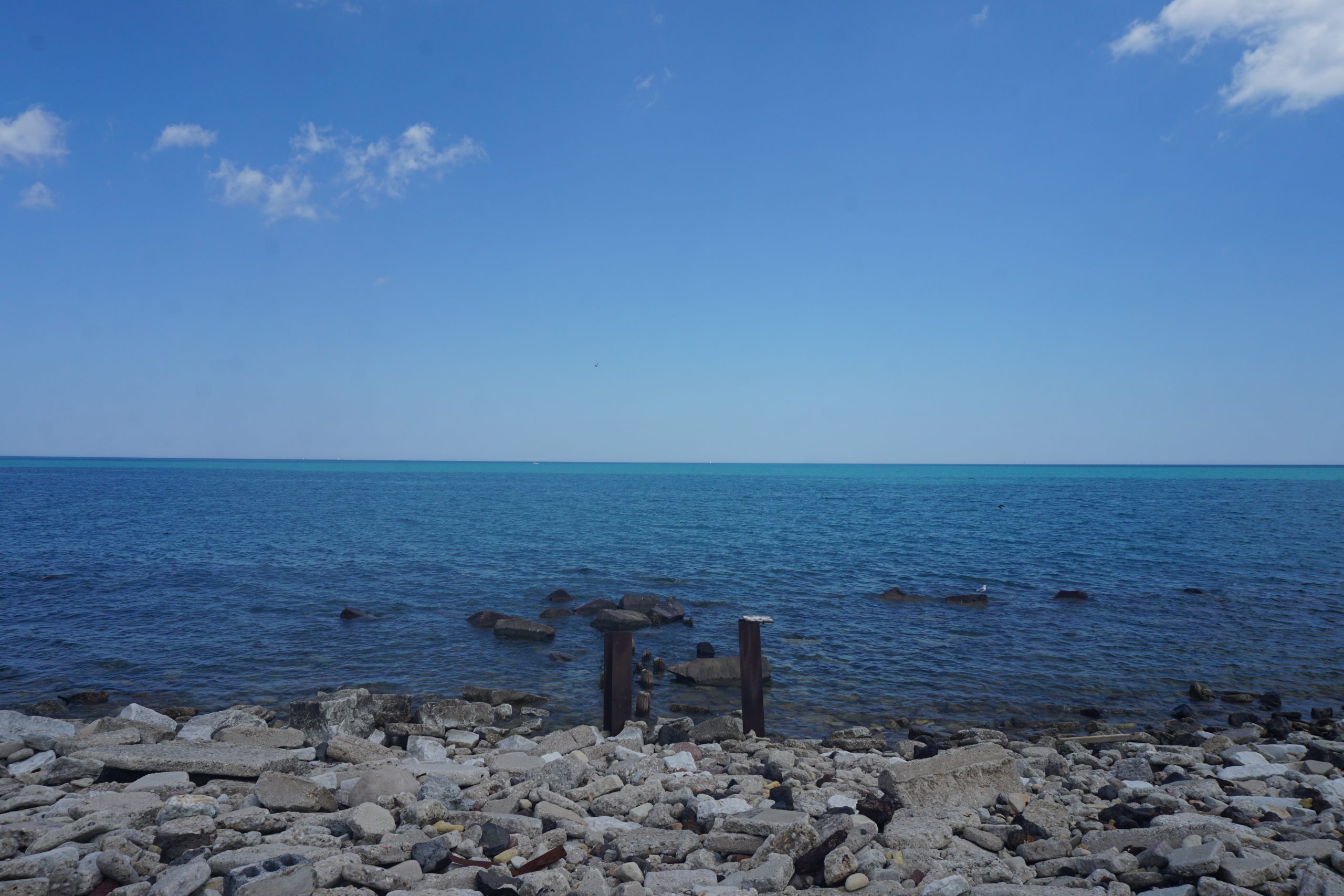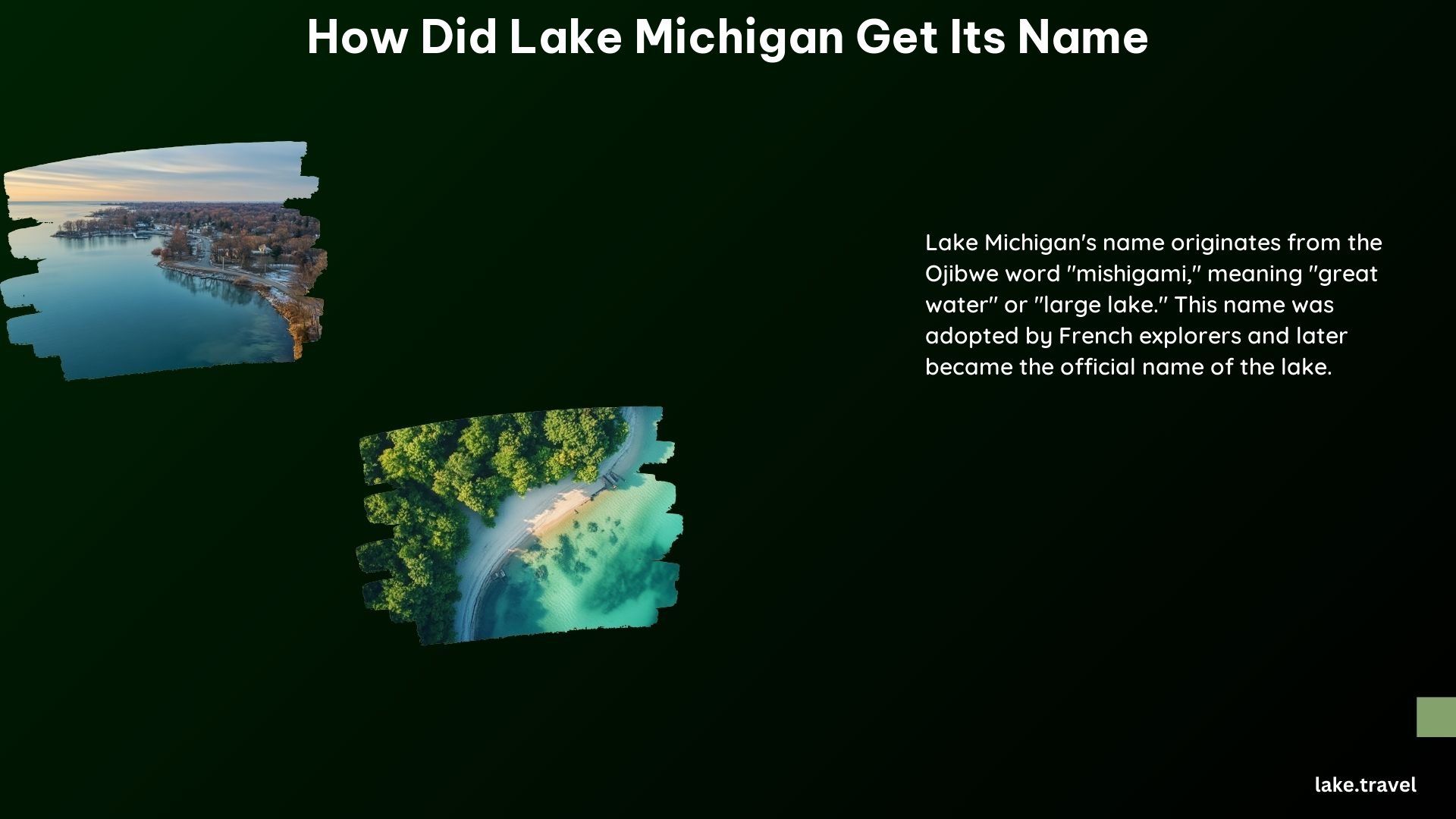Lake Michigan, one of the five Great Lakes of North America, is a vast and captivating body of water that has captured the imagination of many. But have you ever wondered how this magnificent lake got its name? In this blog post, we’ll delve into the fascinating history and origins of the name “Lake Michigan.”
The name “Lake Michigan” is derived from the Ojibwe word “mishigami,” which means “great water” or “large lake.” This name was originally used by the Ojibwe people, a Native American tribe that inhabited the region around the lake. The Ojibwe people were skilled navigators and fishermen, and they relied on the abundant resources of Lake Michigan for their livelihood.
The Ojibwe People and the Origin of the Name “Lake Michigan”

The Ojibwe people were a highly organized and sophisticated society, with a rich cultural heritage that included a deep connection to the natural world. They were skilled in the art of storytelling, and their legends and traditions were passed down through generations.
One of the most important Ojibwe legends related to Lake Michigan is the story of the “Underwater Panther,” a powerful and mysterious creature that was believed to inhabit the depths of the lake. According to the legend, the Underwater Panther was a formidable and dangerous being, capable of causing storms, shipwrecks, and other calamities. The Ojibwe people respected and feared the Underwater Panther, and they developed rituals and practices to appease and honor this powerful entity.
The name “mishigami,” which the Ojibwe used to refer to Lake Michigan, reflects the awe and reverence they felt for this vast and powerful body of water. The word “mishigami” is a combination of two Ojibwe words: “mishi,” meaning “great,” and “gami,” meaning “water.” Together, these words convey the sense of the lake’s immense size and power.
The Adoption of the Name “Lake Michigan” by European Settlers

As European settlers began to explore and colonize the region around the Great Lakes, they encountered the Ojibwe people and learned about their language and culture. The name “Lake Michigan” was eventually adopted by the European settlers, who found it easier to pronounce and spell than the original Ojibwe term.
The first recorded use of the name “Lake Michigan” dates back to the 17th century, when French explorer Samuel de Champlain referred to the lake by this name in his writings. Over time, the name “Lake Michigan” became the standard way of referring to this body of water, and it was eventually incorporated into the official naming of the state of Michigan, which borders the lake.
The Significance of Lake Michigan in the History and Culture of the Region
Lake Michigan has played a crucial role in the history and development of the Midwest region of the United States. The lake’s abundant natural resources, including fish, timber, and minerals, attracted settlers and entrepreneurs to the area, and it became an important hub for trade and transportation.
The lake’s strategic location also made it a key battleground during the French and Indian War and the War of 1812, as both the French and British vied for control of the region. The lake’s role in these conflicts is reflected in the many historic sites and landmarks that can be found along its shores.
Today, Lake Michigan remains an important part of the cultural and economic fabric of the Midwest. It is a popular destination for recreational activities such as boating, fishing, and swimming, and it is also home to a thriving tourism industry. The lake’s natural beauty and rich history continue to captivate and inspire visitors from around the world.
Unique Features and Characteristics of Lake Michigan
Lake Michigan is the only one of the Great Lakes that is entirely within the United States, as it is bordered by the states of Michigan, Illinois, Indiana, and Wisconsin. It is the second-largest of the Great Lakes by volume, with a surface area of over 22,000 square miles and a maximum depth of 925 feet.
One of the most distinctive features of Lake Michigan is its unique shape, which is often described as resembling a hand with the fingers spread out. This distinctive shape is the result of glacial activity during the last ice age, which carved out the lake’s basins and shorelines.
Another notable characteristic of Lake Michigan is its diverse ecosystem, which supports a wide variety of plant and animal life. The lake is home to numerous species of fish, including trout, salmon, and perch, as well as a variety of waterfowl and other wildlife. The lake’s shoreline is also dotted with a variety of habitats, including sandy beaches, rocky cliffs, and wetlands.
Conclusion
In conclusion, the name “Lake Michigan” has a rich and fascinating history that is deeply rooted in the culture and traditions of the Ojibwe people. The lake’s name, which means “great water” or “large lake,” reflects the awe and reverence that the Ojibwe felt for this vast and powerful body of water.
As European settlers began to explore and colonize the region, they adopted the Ojibwe name for the lake, and it eventually became the standard way of referring to this iconic body of water. Today, Lake Michigan remains an important part of the cultural and economic fabric of the Midwest, and its natural beauty and rich history continue to captivate and inspire visitors from around the world.
